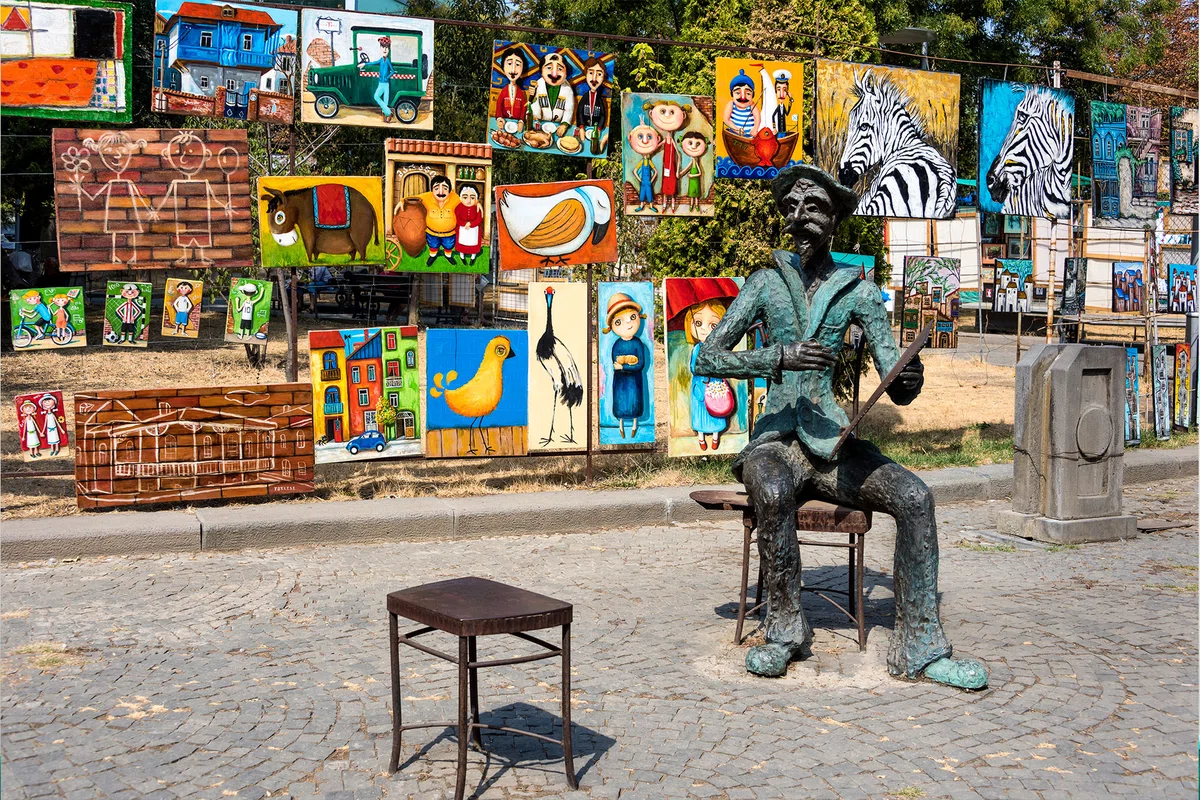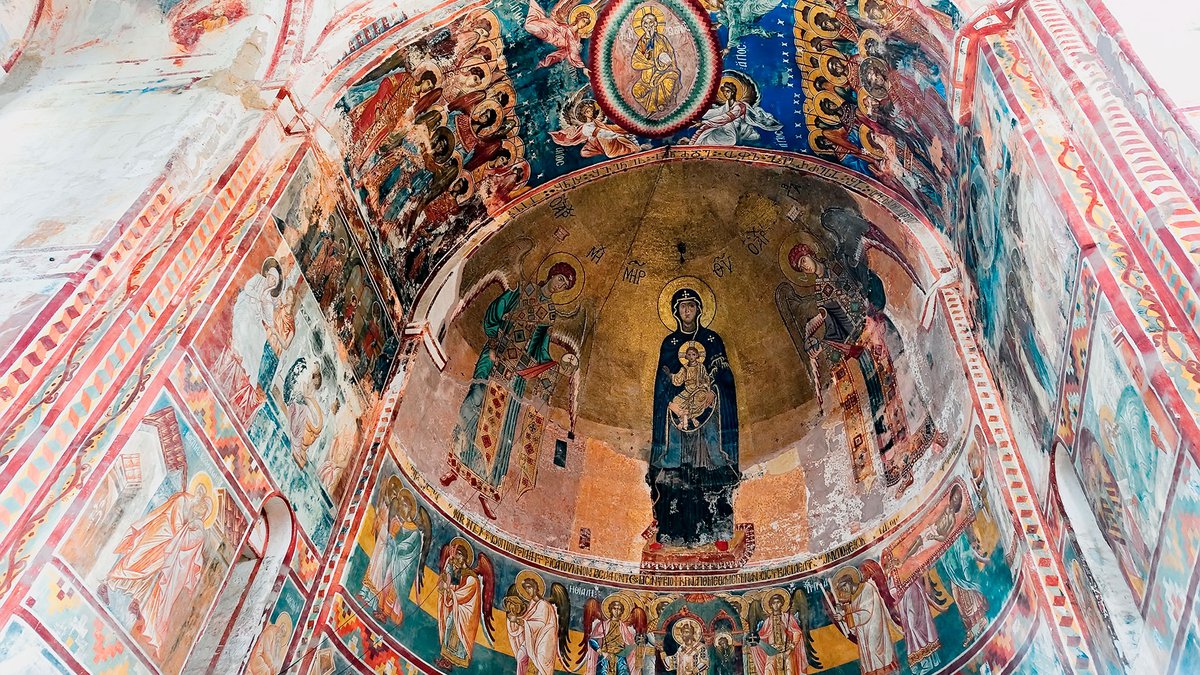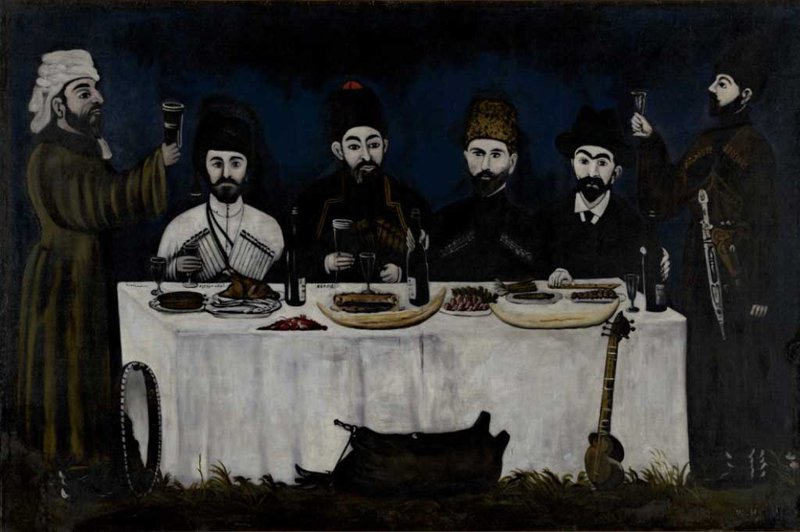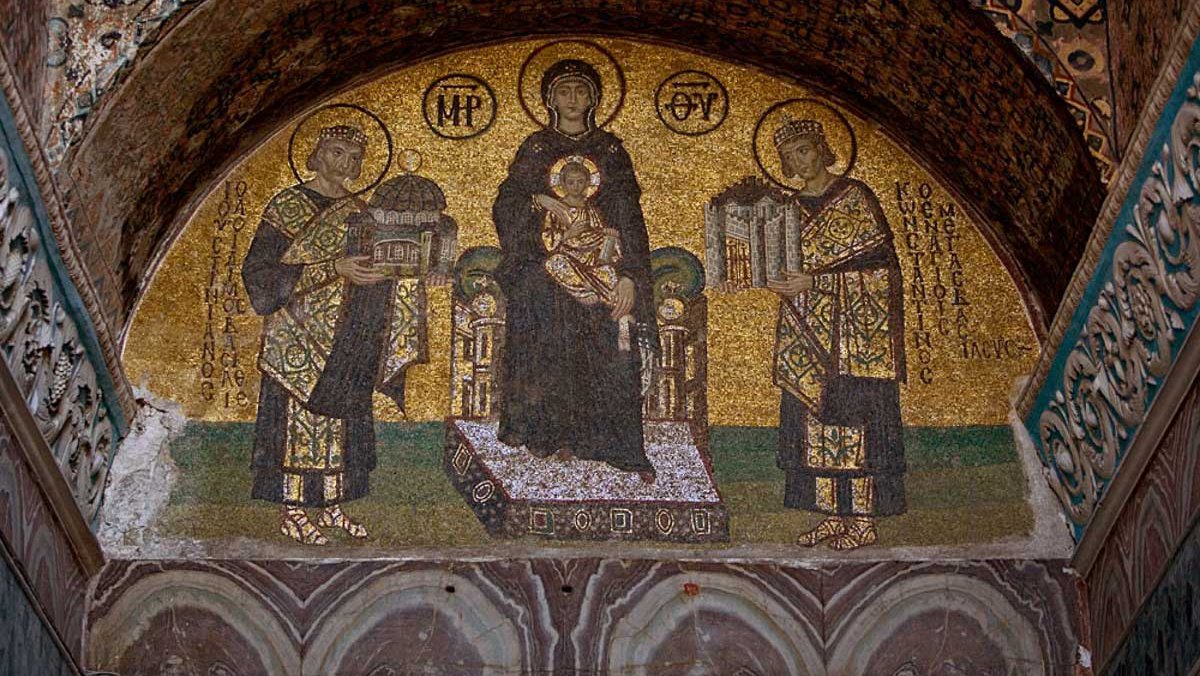
Ancient Georgian painting and the founders of modern painting are Georgian artists.
The foundations of Georgian painting were laid by masters who were engaged in temple painting. Of the more contemporary Georgian artists, the most famous is the primitivist Niko Pirosmani.
Learn about Georgian traditions in painting⬇️
The works of Georgian painters are truly unique and memorable.
And all because in their creations the masters used a rich color palette, complex ornaments and amazing images. The culture of Georgian drawing has not developed from scratch.
This is a huge cultural layer that has been collected and replenished for many centuries, and subsequently passed on to the present generations. Even today, everyone can enjoy the splendor of frescoes created in the 7th-13th centuries, decorating the walls of Georgian churches and monasteries, ancient manuscripts and icons. And all thanks to the existing progress and careful attitude to cultural and historical heritage. And this is not all that Georgia can boast of.
In the Middle Ages, the masters engaged in painting icons followed the trends set by the ancient, Hellenistic and Byzantine schools. Biblical subjects and the lives of saints were used for wall paintings, frescoes often depicted figures of Jesus and the apostles.

In addition, mosaic paintings on various religious themes were also in the trend. Another long-standing tradition is the decoration of manuscripts with colorful miniatures and ornaments. Any of these illuminated manuscripts could be worth a fortune.
The traditional Georgian miniature was created using a certain color scheme. The artists used red-brown and cherry shades. You can also find works made using yellow paint, sepia and cobalt.
All of the above can be attributed to the peculiarities of traditional Georgian ornaments. Artists who followed the traditions of the Constantinople school used a softer scale when working with miniatures. These include shades of blue, green and red. For the background, the masters often chose a golden color.
If we approach this issue from a philosophical point of view, we can draw a simple analogy by comparing art with a bridge. The past epochs act as one shore, and the second shore is nothing but the present time. And the bridge, that is, art is a living link between the spiritual world and the cultural heritage of a person who is not afraid of time.
In modern painting, this is manifested by the fact that current Georgian artists honor and continue the best traditions of previous generations of masters. A variety of expressive means, rich images and a variety of color solutions are also tracked in their work. Some rely on the power of color, tone and texture. The latter try to find plastic clarity of form.
Artists of Georgia
Color and tone are considered the organizing principle, combining into a single picturesque image. Georgian art is characterized by an exquisite combination of traditional national elements and European style. Like the whole culture, it was based under the influence of European, Arabic, Anatolian, Ottoman and Far Eastern cultures. The reason for this was the interesting geographical position of Georgia.
The country is located between Europe and Asia. Its vector uniting north, south, east and west made it an important trading point on the historical Silk Road. The development of trade relations, along with its own rich resources, finally formed the unity of cultures.
The whole world is familiar with the work of such famous artists as David Kakabadze, Lado Gudiashvili and Elena Akhvlediani. All of them worked in Paris in the 20s. Sergey Kabuladze, Cornelius Sanadze, Gigo Gabashvili, Simona Virsaladze are also considered no less famous. Each of them, by right, is a significant person who has made a huge contribution to the culture of Georgia, while becoming part of the world cultural heritage.
A special place in Georgian culture is occupied by the legendary primitive artist Niko Pirosmanishvili, or as he is also called Pirosmani. He is a national hero whose works have become a real discovery for art critics. He lived and worked in 1900 in Tiflis, was self-taught.
Like most of his colleagues, he lived in poverty. He often had to work for a bowl of soup or a bed for the night. As canvases for his paintings, he used ordinary oilcloth, which covers tables in cafes, less often cardboard and tin.
The fact is that the technical canvas-based oilcloth was easily cut and bent, the oil lay down on it without difficulty and held fast. Such a life will negatively affect the health of any person, and Niko was no exception. He contracted tuberculosis and died in obscurity. It was opened in 1912 by futurist artist Mikhail Le-Dantu and brothers Kirill and Ilya Zdanevichi.
They were the first to compare his works with the paintings of the famous French primitivist Henri Rousseau. For many Georgian artists, his work is not only a source of inspiration, but also an example of pure art, not burdened with academic stagnation.

Works of Georgian painters
Pirosmani . A beautiful legend is associated with his name. According to her, one artist fell in love with a ballerina, and full of feelings gave her a very unusual gift of a huge number of oranges. During the tour, the square in front of the hotel where she was staying was all strewn with citrus fruits.
This story was later used by Andrei Andreevich Voznesensky to write the lyrics of the song "Million Roses", which was later performed by the famous singer Alla Pugacheva. Only oranges, the author replaced with more romantic, in his opinion, roses.
You don't have to be an expert artist to enjoy amazing examples of primitive art. It is enough to walk through the streets of Tbilisi, where the exterior walls of shops and dukhans are decorated with many works.
They depict a variety of subjects: rich Georgian feasts, the harvest process or just images of products. All these are the works of nameless artists, each of whom may one day become a new Pirosmani.













41 comments
Log in to leave a comment
Как много материала для изучения тем, кто интересуется творчеством и живописью.
Искусство Грузии определённо стоит Вашего внимания!
Как - то в статьях я уже знакомилась с его работами , но не читала о его бедной жизни. Холсты для картин он заменял клеенкой, иногда картоном, я если честно в шоке, он большой молодец, не унывал, а наоборот, искал методы и поверхности, на которые лучше ложились краски и творил,чтобы прокормиться и выжить. Но, к большому сожалению, Нико заболел и умер, не дождавшись славы. Многие удивляются, что даже в искусстве, в живописях они соблюдали традиции.. А как иначе, этим Грузия и отличается от многих стран.С древних времен и по сей день, не изменяют своим традициям.